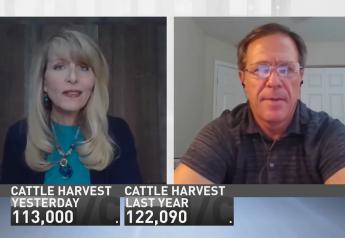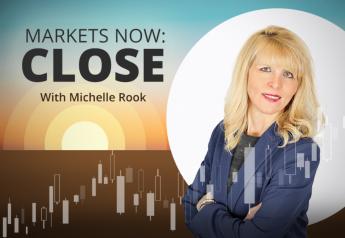Fed Eyes Interest-Rate Cuts for 2024 as U.S. Economy Slows

Current signals in the U.S. economy indicate the Federal Reserve will cut interest rates significantly next year. An initial cut could be made as early as the first quarter of 2024, though many analysts say cuts won’t begin until at least the second quarter.
One of the key factors the central banking system will consider is whether its inflation rate target of 2% has been achieved, says Vince Malanga, president of LaSalle Economics. That percentage is what the Fed has said it has been aiming for in order to help the U.S. achieve a healthy economy with price stability. Currently, the inflation rate is about 3.2%, but interest rates remain high.
“I think you're going to see a marked, dramatic slowdown in inflation here in the next two or three months. And that will give indications that the Fed is at its 2% target, ” Malanga told AgriTalk Host Chip Flory on Tuesday. “If the Fed is at its 2% target, it's going to be very hard pressed to make a case for (any additional) tightening.”
An About Face In Attitude
Flory noted that the potential for interest-rate cuts show there’s been a big shift in attitude by the Fed that has occurred in a relatively short period of time.
“The marketplace has swung very quickly from (saying) ‘more rate hikes are coming’ to ‘hold rates higher for longer’ to ‘maybe a rate cut sometime in 2024’ to ‘a rate cut will be coming in March of 2024,’” Flory said.
Malanga said the shift in attitude by the Fed started in September when interest rates were up to 5% on the 10-year U.S. Treasury yield.
“The view was, ‘Well, the Fed won't have to tighten anymore, because the long end of the bond market is doing its work for them.’ But right after that, of course, the inflation numbers started to come in better than was generally expected, and there was some evidence out there that the economy was starting to slow. And I think both of those developments are building some momentum now,” Malanga told Flory.
Malanga said he believes the U.S. will release a relatively weak employment report this Friday. Furthermore, he anticipates the U.S. will have “good inflation numbers” by the time the Fed meets on Dec. 12.
“There are a lot of indications out here that the labor market is softening up. Historically, when the unemployment rate goes up by more than a half a percent that's a signal of a recession,” Malanga said. “We're right on the verge of that, and so I think that's contributing to the psychology.”
Predictions Are Split Between Camps
Financial institutions are divided on whether Americans should anticipate going into a recession next year. For example, Bank of America says the U.S. will achieve a “soft landing,” while Deutsch Bank predicts a “mild recession.”
One factor likely to contribute significantly to the camp predicting a soft landing: 2024 is an election year.
“The Fed doesn't want to have a recession. So, if the indicators are really pointing towards softness, that would urge them to (move) even faster,” Malanga said. “There will be a lot of political pressure placed on the Fed this summer, if the economy is slipping into a real recession.”
The full discussion between Malanga and Flory on the state of the U.S. economy is available below:
5 Balance Sheet Busters to Watch in 2024
Better Yields and Improved Crop Prices Propel Ag Economists' Outlooks for 2024
El Nino's Effect on Crop Prices







